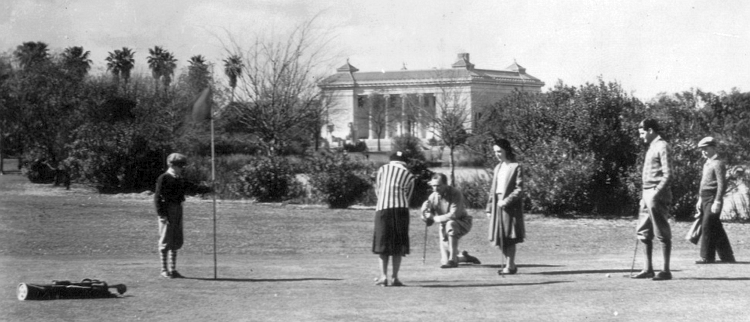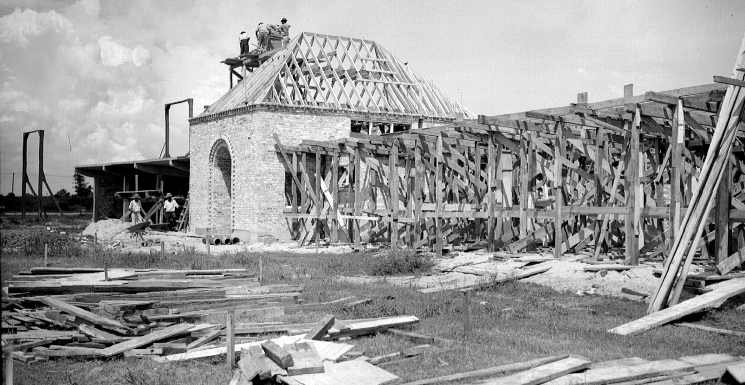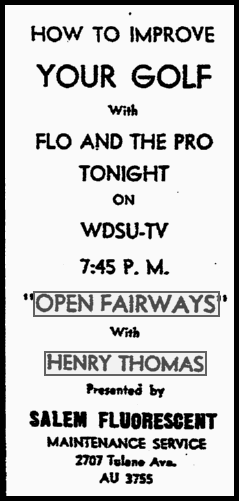|
Today in New Orleans History |
|
|
December 2


Born in New Orleans, Louisiana, Dorsey was a childhood friend of Fats Domino before
moving to Portland, Oregonwhen he was ten years old. He served in the United States Navy in World War II and then began
a career in prizefighting. Boxing as a lightweight in Portland in the early 1950s, he fought under the
name Kid Chocolate and was reasonably successful. He retired from boxing in 1955 and returned to New Orleans, where
he opened an auto repairbusiness as well as singing in clubs at night. His first recording was "Lottie Mo", for the small Valiant label in 1958 (picked up by
ABC Paramount in 1961), and he also recorded for the Rex label. These efforts were unsuccessful, but around 1960 he was discovered by A&R manMarshall
Sehorn, who secured him a contract with Fury Records, owned by Bobby Robinson. After meeting songwriterand record producer Allen
Toussaint at a party, he
recorded "Ya Ya", a song inspired by a group of children chantingnursery rhymes. It went to number seven on the Billboard Hot
100 in 1961, sold over one million copies, and was awarded a gold disc. Although the follow-up "Do-Re-Mi" also made the charts, later releases
on Fury were not successful. Dorsey returned to running his repair business, but
also released singles on the Smash and Constellation labels in 1963 and 1964. He was then approached again by Toussaint, and recorded Toussaint's song "Ride Your Pony" for
the Amy label, a subsidiary of Bell Records. The song reached no.7 on the R&B chart in late 1965, and he
followed it up with "Get Out Of My Life, Woman", "Working in the Coal Mine" – his biggest pop hit
– and "Holy Cow", all of which made the pop charts in both the US and the UK. Dorsey toured
internationally, and also recorded an album with Toussaint, The New Lee Dorsey in 1966. In 1970 Dorsey and Toussaint collaborated on the album Yes
We Can; the title song was Dorsey's last entry in the US singles chart. It was later a hit for the Pointer
Sisters under the title, "Yes We Can Can". With declining sales, Dorsey then returned to his auto repair business. In 1976 Dorsey appeared on the album I Don't Want to Go Home by Southside
Johnny and the Asbury Jukes, which led to more recordings on his own with ABC Records, including the album Night
People. In 1980, he opened for English punk band The Clash on their US concert tour, and also toured
in support of James Brown and Jerry Lee Lewis.
    
Steven Seagal: Lawman television series A&E, starring actor
and martial artist Steven Seagal performing his duties as a reserve deputy sheriff
in Jefferson Parish premiered on December 2, 2009. "I've been working as an officer
in Jefferson Parish for two decades under most people's radar", said Seagal in the premiere episode, "The
Way of the Gun". "I've decided to work with A&E on this series now, because I believe it's important to show
the nation all the positive work being accomplished here in Louisiana—to see the passion and commitment that comes
from the Jefferson Parish Sheriff's Office in this post-Katrina environment." Seagal's current rank of
Reserve Deputy Chief is largely ceremonial. In the late 1980s, Jefferson Parish's longtime sheriff, Harry Lee,
asked Seagal to train some of his deputies in the martial arts, unarmed combat, and marksmanship. The success of these classes
led to Lee asking Seagal to join the department as a reserve deputy. Frequently-featured fellow deputies include: Col. John
Fortunato, Capt. Alex Norman, and Sgt. Lawrence Matthews and Sgt. Larry Dyess. From http://en.wikipedia.org/wiki/Steven_Seagal:_Lawman
WCKW-FM 92.3 radio station went on the air in 1966, broadcasting from a transmitter in Garyville, playing easy listening
music spun by Paige Dew (8 am. - 4 p.m.) and Walter Smith (4 p.m. - midnight).
WCKW-AM radio signed on December 2, 1970 as country music outlet "WKQT" and was the sister
station of WCKW-FM. These stations were founded by Sidney Joseph Levet
III, a New Orleans native and an electronic engineer.
In February 1990, Levet was named Broadcaster of the Year by the Louisiana Association of Broadcasters.
By 1973 both stations became simulcasts with the AM becoming "WCKW" on March 2, 1985. After the FM flipped to active rock, the AM was sold in 2000 to
River Parishes Radio who switched it to a gospel format. Covenant Network purchased the station on January 2, 2007, and
began transmitting Catholic programming. The station briefly became "WLTS" on October 20, 2000.
The station was re-assigned the call sign "WCKW" by the Federal Communications Commission (FCC) on November
24, 2000. Jazz trumpeter Sidney Desvigne (September 11, 1893 – December 2, 1959) played
in a number of noted 1910s and 1920s-era New Orleans Jazz ensembles, including Leonard Bechet's Silver
Bell Band, the Maple Leaf Orchestra, the Excelsior Brass Band, and Ed Allen's Whispering Gold Band.
He and Fate Marable often played together on riverboats. In 1926 Desvigne formed his own orchestra, Sidney Desvigne's Southern
Syncopators, playing at St. Bernard's Country Club and on the S.S. Island Queen; among his sidemen were Red Allen,
Pops Foster, and Al Morgan. Desvigne attempted to create a New Orleans big band in the 1930s, hoping to capitalize on the
swing jazz craze. In the 1950s he left New Orleans and opened a club in Los Angeles. The Liberty Ship James Eagan Layne was launched on December 2, 1944 at Delta Shipbuilding Company. Born in New Orleans on June 10, 1833,
Pauline Cushman (Born Harriet Wood) was an actress and a spy for the Union Army during the Civil War. Harriet and her seven
brothers were raised in Grand Rapids, Michigan. In 1851 she returned to New Orleans to join the performance group New
Orleans Varieties. Later she would travel to New York where she would take the stage name Pauline Cushman. While touring
with a theatrical troupe in Union-controlled Louisville, Kentucky. By fraternizing with rebel military commanders, she
managed to conceal battle plans and drawings in her shoes, but was caught and brought before Confederate general Braxton
Bragg, tried by a military court, and sentenced to death. It is said that she was saved three days before her scheduled
hanging by the invasion of the area by Union troops. Some reports state that she returned to the South in her role as a
spy dressed in male uniform. She was awarded the rank of Brevet Major by General James A. Garfield and commended by President
Abraham Lincoln for her service to the Federal cause, and became known as "Miss Major" Cushman. By the end of
the war in 1865 she was touring the country giving lectures on her exploits as a spy. Pauline became popular enough to be
featured by P. T. Barnum, which perhaps explains why details of her story may well have become exaggerated. But because
her undercover activities on behalf of the government were secret, it also helps to explain the lack of corroborative information
about her life at this time. However, in 1865 a friend, Ferdinand Sarmiento, wrote her biography, Life of Pauline Cushman: The celebrated Union spy and scout. Comprising her early history; her entry into the secret service notes and memoranda.
In her final years, disabled from the effects of rheumatism and arthritis, she developed an addiction to pain medication.
On the night of December 2, 1897 she took an overdose of morphine, and was found the next morning by her
landlady. She was 60 years old. Her Civil War fame was recalled at her funeral, which was arranged by members
of the Grand Army of the Republic. "Major" Cushman's remains now rest in Officer's Circle at the Presidio's National
Cemetery in San Francisco. Her simple gravestone recognizes her contribution to the Union's victory. It is marked, "Pauline
C. Fryer, Union Spy." Source: http://en.wikipedia.org/wiki/Pauline_Cushman Henry Thomas, "Mr. Golf" in New Orleans “In Lieu Of Flowers, Please Make Donations To Rebuild City Park Golf Course” requested
the Times-Picayune obituary for Francis Henry Thomas who died on December 2, 2005 in Houston months after
post-Katrina federal flood-wall breaks caused ruin to park's courses and displaced him, his wife Romy, and hundreds of thousands
of other New Orleanians. Thomas had dedicated more than half of his 94 years to caring for and expanding City
Park's golf offerings into one of the largest facilities in the country. He came to be known as "Mr. Golf"
to local adherents of the sport. Henry Thomas began working, in 1920, as a caddy at the park when
he was 9 years old. He carried Babe Ruth's clubs when the Yankees trained in New Orleans. In 1929, Thomas became a pro at
age 18 and in 1930 he became an assistant at City Park. He then moved to Colonial Country Club in Harahan until 1933
when he returned as head pro at City Park when golf facilities included a mere 9-hole course abutting the McFadden mansion
(now Christian Brothers School) and property. Thomas remembered the "Black Cat", a
depression era speakeasy on the 13th hole near Bayou St. John, where golfers stopped for a home-brew -- many of them then
failing to complete the remaining holes. During the 1930s he organized a Christmas Holiday Tournament which evolved
into the New Orleans Open, which he was instrumental in organizing and served twice as its chairman. In 1933 he organized
free weekly lessons for children age 5 through 14 which continued for decades and introduced generations of New Orleanians
to the sport. The program grew to include as many as 200 teachers, many of whom he had taught. A good number of
his students became golf professionals, including the man who would replace him when he retired. During
Thomas' tenure the following improvements were completed: A new nine hole golf course completed in 1937, which added
nine holes to the original course. It ran along Bayou St. John, surrounded the McFadden property, and continued north of
Art Museum. The WPA caption for the 1930s photograph above reads "Golf the Year Round. This course, in beautiful
City Park, is one of the six evergreen golf courses in New Orleans on which play is continuous the year round”. The old St. John's
golf clubhouse was remodelled at this time and was surrounded by additional structures which contained a lobby, lounge,
display shop, men's and women's locker rooms (increased from 75 to 250 lockers), and a caddy house accommodating 300 caddies
with a sound system connecting with the club house and a bulletin board maintained to display current news on golfing events
throughout the country, and an outdoor recreational area – all at a cost of $85,000. For the 1938 New Orleans Open
PGA Golf Tournament Mayor Robert S. Maestri donated $5000 in prize money – then $10,000 per year until 1941 when dentist
Herbert H. Meyer donated $5,000. The 1938 event attracted 10,000 spectators. The Crescent City Open in 1938 was won by
Lloyd Mangrum who bested Sam Snead and Lawson Little. The park hosted the Open until 1962. 1969
brought the addition of the 18-hole North Course and another club house -- Mayor Victor Schiro was the first to tee
off. That year the 15,000 square-foot "Henry Thomas' Golf Shop" in the park at 1040 Filmore Street took in
$6,500 in gloves sales alone (5% of the total volume of the shop, at which Mrs. Romy Thomas, his wife, worked). The Greater New Orleans Sports Hall of Fame inducted
Henry Thomas in 1977. In 1984 Friends of City Park named a tournament for him. Golfers played 250,000 rounds
of golf at City Park that year. In 1986 he asked that his contract be extended for another two years, which the City
Park commissioners approved, but in 1988 they decided that it was time for him to retire. Photos and some text from New
Orleans City Park (Images of America) |
|
|

To receive an update for each day in New Orleans history,
join our facebook page - Today in New
Orleans History.
Analytics |




 The driving range is under construction in this 1938 view (left). WPA notes for this photograph are, “It
will have an administrative building which will contain lockers and dressing rooms; refreshment room; six stalls, each of
which will be 18 feet wide. The field will be equipped with four batteries of flood lights”.
The driving range is under construction in this 1938 view (left). WPA notes for this photograph are, “It
will have an administrative building which will contain lockers and dressing rooms; refreshment room; six stalls, each of
which will be 18 feet wide. The field will be equipped with four batteries of flood lights”.  In 1940, Thomas inaugurated an annual tournament for juveniles. In 1942, he created a club for working women golfers,
Beginning in the 1940s, he began visiting Carville Leprosarium twice each month to teach doctors and patients, and continued
to do so until the 1980s.
In 1940, Thomas inaugurated an annual tournament for juveniles. In 1942, he created a club for working women golfers,
Beginning in the 1940s, he began visiting Carville Leprosarium twice each month to teach doctors and patients, and continued
to do so until the 1980s. 
